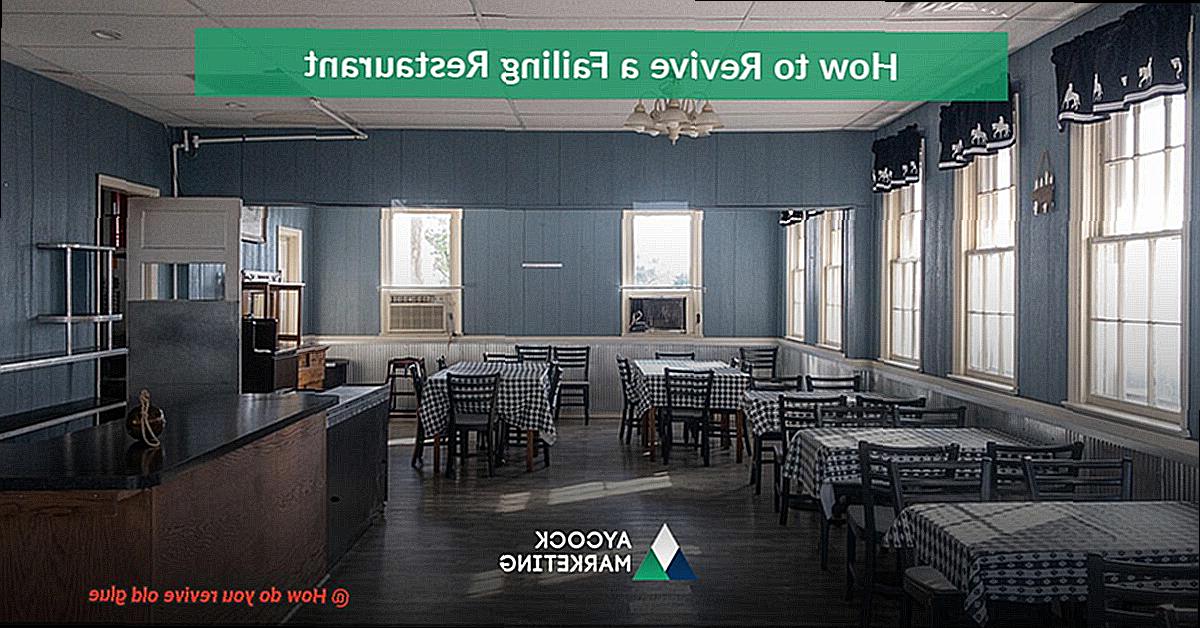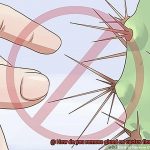Title: Bring Your Glue Back to Life: The Ultimate Guide to Reviving Old Adhesive
Introduction:
Contents
- 0.1 Introduction:
- 0.2 Why Bother with Old Glue?
- 0.3 Assess Your Glue:
- 0.4 Soften It Up:
- 0.5 Heat It Up:
- 0.6 Call in the Solvent Squad:
- 1 What is Glue?
- 2 Types of Glue
- 2.1 Types of Glue: Choosing the Right Adhesive for Your Project
- 2.2 White Glue: White glue, also known as school glue or PVA glue, is a water-based adhesive that dries clear. It is versatile and suitable for a wide range of projects, such as paper crafts, woodwork, and fabric projects. The beauty of white glue lies in its ease of use and clean-up process – simply wash away excess glue with water. This makes it perfect for kids’ crafts too. Whether you’re making collages, assembling cardboard structures, or creating fabric masterpieces, white glue will be your trusty companion.
- 2.3 Epoxy Glue: If you’re seeking strength and durability in an adhesive, look no further than epoxy glue. Comprised of two parts – resin and hardener – epoxy glue creates a chemical reaction when mixed together, resulting in a powerful bond. This type of glue is resistant to heat, water, and chemicals, making it ideal for heavy-duty projects or repairs. From bonding metals and ceramics to glass and plastic, epoxy glue is your go-to adhesive for projects that require long-lasting results.
- 3 Why Does Glue Dry Out?
- 4 Heating the Glue
- 5 Adding Water to the Glue
- 6 Adding Solvents to the Glue
- 7 Stirring or Shaking the Glue
- 8 Different Types of Glues Require Different Revival Methods
- 9 Conclusion
Ever had that moment when you desperately need glue, only to find it dried up and useless? It’s a frustrating experience we can all relate to. But fear not, my fellow DIYers and craft enthusiasts. Reviving old glue is not some mystical art; it’s actually pretty simple. With just a few tricks up your sleeve, you can resurrect the stickiness of your forgotten adhesive and reclaim its power.
In this blog post, we’ll dive into the world of glue revival, exploring effective techniques that will save you money, time, and unnecessary waste. So grab those sad tubes, bottles, or sticks of hardened goo and let’s embark on this sticky adventure together.
Why Bother with Old Glue?
You might be wondering why bother reviving old glue when you can easily buy a new one. Well, besides saving some cash, bringing your adhesive back to life saves you from making an extra trip to the store. And hey, it’s also an eco-friendly approach that reduces waste by making the most out of what you already have.
The Revival Process:
Assess Your Glue:
First things first – take a good look at your glue and figure out what you’re dealing with. Some glues are more responsive to revival techniques than others. Water-based or PVA glues are usually easy peasy to revive. However, super glues or cyanoacrylates might be a bit trickier.
Soften It Up:
To start the revival process, try softening your glue. Add a few drops of warm water into the container and give it a gentle stir. Let it sit for a few minutes so that the water can work its magic and soften that hardened blob.
Heat It Up:
For those stubborn glues that refuse to budge, heat is your secret weapon. You can either immerse the glue container in a bowl of warm water or grab your trusty hairdryer for some direct heat action. Just be careful not to go overboard and melt the glue into oblivion.
Call in the Solvent Squad:
If water and heat don’t do the trick, it’s time to bring out the big guns – solvents. Acetone, nail polish remover, or mineral spirits can work wonders on hardened adhesive. Apply a small amount of solvent to the glue, let it work its magic, and
What is Glue?
Glue: The Invisible Force that Holds Things Together
Glue is an extraordinary substance with the power to bring things together, creating strong and lasting bonds. Whether you’re working on a craft project, repairing a broken item, or even constructing something from scratch, glue is an indispensable tool.
But what exactly is glue? At its core, glue is an adhesive substance that joins or bonds two or more surfaces. It can take various forms, such as liquid, gel, or solid, and is composed of different chemical compounds depending on its intended use.
The key ingredient in glue is a polymer – long chains of molecules that have the ability to stick to surfaces. When these polymers come into contact with another surface, they form a strong bond, creating a secure attachment. This bonding process is what makes glue such a reliable adhesive.
In addition to polymers, glue contains other ingredients that enhance its adhesive properties and provide additional benefits. Solvents are often added to keep the glue in a liquid or semi-liquid state, making it easier to apply. Additives are included to improve the strength and flexibility of the glue, ensuring it can withstand various stresses and strains.
There are countless types of glue available, each designed for specific purposes. Wood glue, for example, is formulated specifically for bonding wood surfaces. Its composition allows it to penetrate into the wood fibers and create a strong connection. Super glue, on the other hand, is known for its quick-drying and strong bonding capabilities, making it ideal for small repairs or projects that require instant adhesion.
Glue finds its applications in various industries as well. In construction, it is used for attaching materials like tiles or flooring. In the automotive industry, glue is used to bond components together, ensuring structural integrity and safety. Manufacturers rely on glue to assemble products efficiently and securely.
But it’s not just in professional settings where glue shines. In our everyday lives, glue plays a vital role in our DIY projects and crafts. It helps us create beautiful pieces of art, repair cherished items, and unleash our creativity.
Types of Glue
Types of Glue: Choosing the Right Adhesive for Your Project
Glue is a magical substance that bonds materials together, creating strong and durable connections. In the vast world of adhesives, there are numerous types available, each with its own unique properties and uses. Whether you’re a craft enthusiast, a DIYer, or a professional builder, understanding the different types of glue can help you select the right adhesive for your specific project. Let’s delve into the world of glue and explore some of the most common types and their applications.
-
White Glue: White glue, also known as school glue or PVA glue, is a water-based adhesive that dries clear. It is versatile and suitable for a wide range of projects, such as paper crafts, woodwork, and fabric projects. The beauty of white glue lies in its ease of use and clean-up process – simply wash away excess glue with water. This makes it perfect for kids’ crafts too. Whether you’re making collages, assembling cardboard structures, or creating fabric masterpieces, white glue will be your trusty companion.
- Super Glue: When it comes to quick fixes and small repairs, super glue takes center stage. Also known as cyanoacrylate adhesive, super glue is a fast-drying and strong adhesive that bonds almost instantly. It is perfect for fixing items made of plastic, metal, or ceramics. However, beware of its powerful nature – once applied, super glue forms an almost unbreakable bond. Be careful not to stick your fingers together or permanently attach unintended objects.
-
Epoxy Glue: If you’re seeking strength and durability in an adhesive, look no further than epoxy glue. Comprised of two parts – resin and hardener – epoxy glue creates a chemical reaction when mixed together, resulting in a powerful bond. This type of glue is resistant to heat, water, and chemicals, making it ideal for heavy-duty projects or repairs. From bonding metals and ceramics to glass and plastic, epoxy glue is your go-to adhesive for projects that require long-lasting results.
- Wood Glue: As its name suggests, wood glue is specifically designed for bonding wood surfaces together. It provides a strong bond and dries clear, ensuring a seamless finish. Wood glue is commonly used in woodworking projects, such as furniture assembly or repairing wooden objects. Its ability to penetrate the wood fibers creates a sturdy connection that can withstand the test of time. So, whether you’re constructing a bookshelf, fixing a loose chair leg, or building a wooden sculpture, wood glue will be your steadfast ally.
Why Does Glue Dry Out?
Glue is more than just a sticky substance; it possesses the extraordinary ability to bond materials together, creating a strong and durable connection. But have you ever wondered why glue dries out? In this article, we will delve into the fascinating science behind the drying process of glue and explore the factors that influence it.
At the heart of glue’s drying process lie polymers, long chains of molecules with an uncanny knack for sticking to other materials. When you apply glue to a surface, it starts off with a liquid-like consistency. But as soon as it comes into contact with air, the magic begins.
The main reason why glue dries out is the evaporation of moisture within the adhesive. As the glue meets air, its moisture content gradually decreases, leaving behind solid polymer chains that form the adhesive bond. This captivating process is known as polymerization.
Temperature plays a significant role in determining how quickly glue dries. Higher temperatures accelerate the drying process, while lower temperatures slow it down. Similarly, humidity levels also come into play. Lower humidity levels facilitate faster drying, whereas higher humidity levels hinder it.
Different types of glue have different compositions, which affect their drying time as well. Super glue or cyanoacrylate adhesive, with its fast-acting formula, dries within seconds or minutes. On the other hand, wood glue or epoxy adhesive may take several hours or even days to fully dry and cure.
It’s essential to note that not all glues can be revived once they dry out. Some types, like super glue, form irreversible bonds and cannot be reactivated. However, certain glues can be revived if they have partially dried out.
To revive old glue, you need to reintroduce moisture into the dried-out adhesive. This can be accomplished by adding water or applying heat to soften the glue. It is crucial to follow the manufacturer’s instructions for each specific type of glue to avoid compromising its adhesive properties.
However, reviving old glue may not always be effective. If the glue has been dried out for an extended period or has been subjected to harsh conditions, it may have lost its adhesive properties and cannot be revived. In such cases, it is best to replace the old glue with a fresh adhesive for optimal bonding results.
Heating the Glue
Glue, with its incredible bonding power, has the ability to bring materials together. However, over time, glue can dry out and lose its adhesive properties. But fear not. There is a fascinating solution to revive old glue – heating it. In this article, we will explore different methods for heating glue and the precautions to take when doing so, allowing you to unleash the full potential of your adhesive magic.
Methods for Heating Glue:
Hot Glue Gun for Thermoplastic Glues:
For thermoplastic glues like hot glue or craft glue sticks, a hot glue gun is your go-to tool. This magical device heats the glue stick, transforming it into a liquid state that can be effortlessly applied to your project. Perfect for small craft projects or quick repairs, this method offers precision and rapid drying time.
Hot Water Bath for Bottled or Tubed Glues:
When dealing with bottled or tubed glues such as wood glue or super glue, a hot water bath can work wonders. Simply submerge the closed bottle or tube in a bowl of hot water. The heat from the water permeates the glue, rendering it more fluid and easier to work with. Remember, this method is exclusive to glues that are not water-soluble.
Heat Guns or Blow Dryers for Industrial Applications:
For larger quantities of glue in industrial applications, heat guns or blow dryers come to the rescue. These powerful tools blow hot air onto the glue, softening it and making it easier to spread or manipulate. However, caution must be exercised as these tools reach scorching temperatures swiftly. Keep a safe distance from the glue to prevent accidents and avoid overheating.
Precautions:
Avoid Excessive Heat:
Excessive heat can have adverse effects on certain glues and materials. Overheated glues may lose their adhesive properties, while susceptible materials can suffer damage. Always perform a small compatibility test in an inconspicuous area before applying heat to prevent unwanted consequences.
Follow Manufacturer’s Instructions:
Different types of glue have specific instructions for heating. It is crucial to follow the guidelines provided by the manufacturer to ensure that the adhesive properties of the glue remain intact.
Adding Water to the Glue
Fear not, for today we shall uncover the enchanting secret to reviving old glue with a splash of water. Whether you’re a craft aficionado, a repair guru, or simply enjoy the art of bonding, this simple trick will save you money while making your glue usable again. So, prepare your stirring stick and immerse yourself in the captivating world of glue revival.
Step 1: Assess the Type of Glue:
Before donning your magician’s cape, it’s crucial to determine if your glue is water-friendly. Wood glue and white glue are ideal candidates for revival, while super glue or epoxy won’t respond to the water trick. Check the label or conduct a quick internet search to confirm if your glue is compatible with water.
Step 2: Adding Water Gradually:
Now that you’ve identified your glue as a worthy contender for revival, it’s time to work some magic. Begin by adding a few drops of water to the desiccated glue. Remember, less is more. You don’t want to drown your adhesive in a watery abyss. Use a stirring stick or even a toothpick to blend the water into the glue until it is evenly dispersed.
Step 3: Achieving the Perfect Consistency:
The key to successful revival lies in finding the perfect consistency. Continue adding small amounts of water and mixing until you attain that luscious, velvety texture you desire. Exercise patience and take it slow – gradual water additions allow you to maintain control and prevent over-watering the glue.
Step 4: Test and Triumph:
Congratulations. You have resurrected your old glue from its dusty grave. Now it’s time to put it to the ultimate test. Utilize it for your crafts, repairs, or any other projects that require bonding. However, bear in mind that the adhesive strength and durability of revived glue may not match that of fresh glue. Hence, it is wise to test it on a small, inconspicuous area before embarking on critical applications.
Adding Solvents to the Glue
Before you toss it aside, consider the power of solvents to revive its adhesive properties and bring it back to life.
Solvents are the secret ingredient that can dissolve or thin out glue, making it easier to spread and bond surfaces together. There are several common solvents that can be used to revive old glue, including acetone, mineral spirits, and denatured alcohol.
Before you start adding solvents to your glue, it’s crucial to check the label or manufacturer’s instructions for any specific recommendations or warnings. Not all glues are compatible with all solvents, so it’s essential to ensure compatibility before proceeding.
Acetone is a widely-used solvent for reviving old glue. Its strength allows it to dissolve a wide range of adhesives, including cyanoacrylate (super glue) and some types of epoxy. However, acetone may not be suitable for water-based or PVC-containing glues.
Mineral spirits, also known as white spirit or paint thinner, can also work wonders on old glue. This versatile solvent is commonly used for removing paint and varnish but can also effectively soften and thin out certain types of glue. Remember to test mineral spirits on a small inconspicuous area before applying it to the entire surface.
Denatured alcohol is another reliable option for reviving old glue. This mixture of ethanol and other chemicals is not fit for consumption but can dissolve many types of adhesives, including rubber cement and certain wood glues. Keep in mind that denatured alcohol may not be as effective on stronger adhesives like epoxy or super glue.
When using solvents to revive old glue, take proper safety precautions. Solvents are often flammable and may release harmful fumes if inhaled. Work in a well-ventilated area and use protective gloves to avoid direct contact.
To begin the process, apply a small amount of the selected solvent to the old glue and let it sit for a few minutes. This allows the solvent to penetrate and soften the adhesive. Gently remove the softened glue from the surface using a scraper or blunt tool.
If the glue proves stubborn or thick, repeat the process with additional solvent until it becomes more manageable. Be patient and avoid applying excessive force, as this can damage the material or surface you’re working on.
After successfully softening and removing the old glue, thoroughly clean the surface with soap and water to eliminate any residue or remaining solvent. Allow the surface to dry completely before applying fresh adhesive or using the revived glue.
It’s important to note that not all glues can be effectively revived using solvents. When in doubt, consult the manufacturer’s recommendations or seek professional advice.
Stirring or Shaking the Glue
Don’t worry, we’ve got you covered. In this blog post, we’ll explore the tried and tested method of stirring or shaking glue to revive its adhesive properties. Whether you’re a DIY enthusiast or a professional crafter, this simple technique can save you time, effort, and money. So let’s dive in and discover the magic behind stirring or shaking glue.
Understanding the Method:
The process of stirring or shaking glue is more than just a quick fix; it’s a transformative experience for your adhesive. By agitating the glue, you break up hardened particles and restore its original consistency. This method works wonders on old, thickened glue that has lost its stickiness.
Tools of the Trade:
To embark on this adhesive revival journey, arm yourself with a trusty stir stick or a small spatula for stirring. Alternatively, give the container a vigorous shake to achieve the desired results. But remember to ensure that the glue container is tightly sealed before you begin – we don’t want any messy surprises.
Water-Based Vs. Solvent-Based Glues:
Not all glues are created equal when it comes to reviving them through stirring or shaking. Water-based glues like white school glue or wood glue are more receptive to agitation due to their higher water content. On the other hand, solvent-based glues such as epoxy or super glue have different chemical properties that may not be as easily revived using this method.
Time is Key:
A little patience goes a long way when it comes to stirring or shaking glue. Dedicate a few minutes to this process to allow the settled particles to disperse evenly throughout the glue. Think of it as giving your glue a soothing massage, allowing it to regain its adhesive prowess.
Troubleshooting:
If stirring or shaking doesn’t fully revive your glue, don’t despair. There are other methods you can try. Adding a small amount of water or solvent can help thin out the glue and make it more workable. However, it’s important to note that not all types of glue can be revived using this method, especially if they have expired or deteriorated over time. In such cases, it may be best to bid farewell to the old glue and invest in a fresh new adhesive.
Different Types of Glues Require Different Revival Methods

Don’t worry, because there are ways to bring it back to life. Different types of glues require different revival methods, and today we’ll explore some simple tricks to make your glue usable again. So, let’s dive in and discover the secrets of glue revival.
White Glue (PVA Glue):
White glue, also known as PVA glue, is a popular adhesive for arts and crafts projects. It is water-based and commonly used for paper, cardboard, and other porous materials. Over time, white glue can become thick and less adhesive. To revive old white glue, add a few drops of water and stir it thoroughly. This will help restore its original consistency and adhesive properties. However, be cautious not to add too much water, as it can dilute the glue too much and affect its bonding strength.
Super Glue (Cyanoacrylate Adhesive):
Super glue is a fast-drying adhesive that forms an instant bond. However, it can become dry and unusable if not properly sealed. To revive old super glue, gently warm it up using a hairdryer or by placing the bottle in warm water. The heat will soften the glue and make it usable again. Be careful not to overheat the glue, as excessive heat can cause the bottle to burst or affect the bonding properties of the glue. After warming the super glue, give it a good shake or stir to ensure that it is thoroughly mixed before using.
Wood Glue:
Wood glue is specifically designed for woodworking projects and provides a strong bond for joining wood surfaces together. Over time, wood glue can become thick and clumpy due to evaporation of moisture from the adhesive. To revive old wood glue, add a small amount of water and stir it until it reaches a smooth consistency again. This will make it easier to work with when bonding wood surfaces. However, be cautious not to add too much water, as it can weaken the adhesive properties of the glue. It’s always best to start with a small amount of water and gradually add more if needed.
Epoxy Glue:
Epoxy glue consists of two components – resin and hardener – that need to be mixed together for activation. Once mixed, epoxy glue has a limited working time before it hardens. If old epoxy glue has hardened, it cannot be revived and should be discarded. However, if it is still in its liquid state but has thickened over time, adding a small amount of acetone or alcohol can help thin it out and make it usable again. It’s important to add the solvent gradually and mix well until the desired consistency is achieved. Keep in mind that adding too much solvent can affect the bonding strength of the epoxy glue.
sZ4jeK56dTQ” >
Conclusion
Reviving old glue can be a tricky task, but fear not.
There are a few methods you can try to bring your glue back to life. One option is to heat the bottle of glue in warm water, allowing the heat to soften and liquefy the dried-out adhesive.
Another technique is to add a small amount of water or vinegar to the glue and mix it thoroughly until it becomes more pliable. Additionally, you can try using a hairdryer on low heat to warm up the glue and make it easier to work with.
Remember, patience is key when reviving old glue – it may take some time and experimentation to find the method that works best for you.






